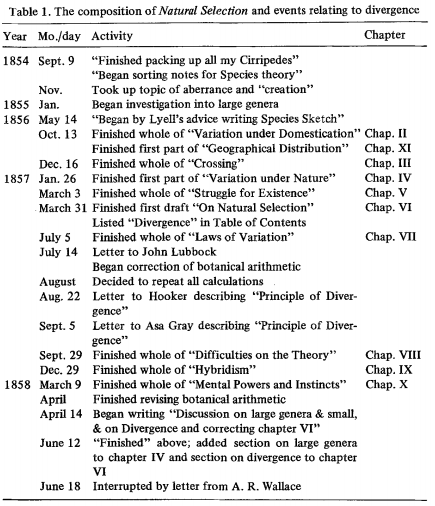Browne 1980

Bronwe 1980 · he barely referred to his botanical statistics or the long sequence of calculations which he had undertaken from 1854 to 1858. He compressed and simplified these into a few meager paragraphs, giving his readers only six pages of statistical data to fill out the discussion of "variation under nature" in Chapter 11.2 By contrast, he had originally devoted over fifty tightly written folios, with further supplementary notes and tables, to the same theme in the "big species book," Natural Selection 53 · botanical arithmetic (a term coined by Humboldt in 1815)7 consisted merely of counting up all the species in area A and all those in area B, and itemizing how many were held in common. 55 · Depois Brown tornou popular o calculo da media de sps por genero 56 · the "Sketch" and "Ess...